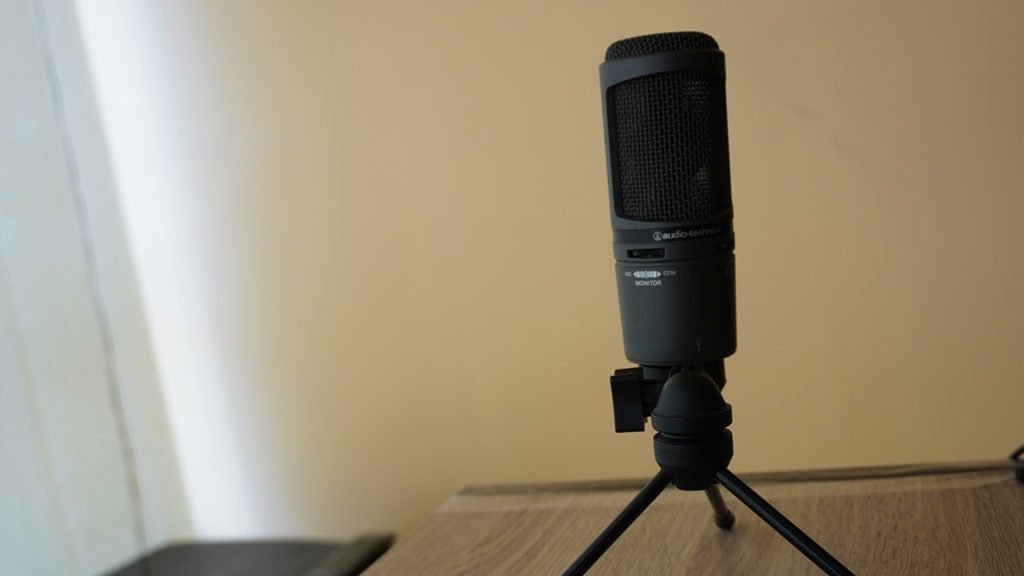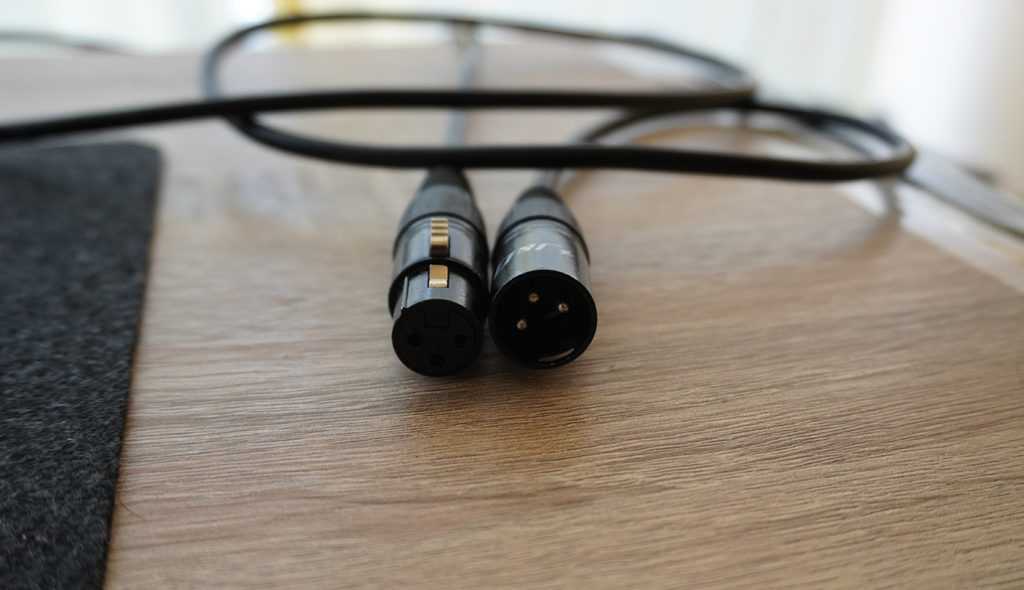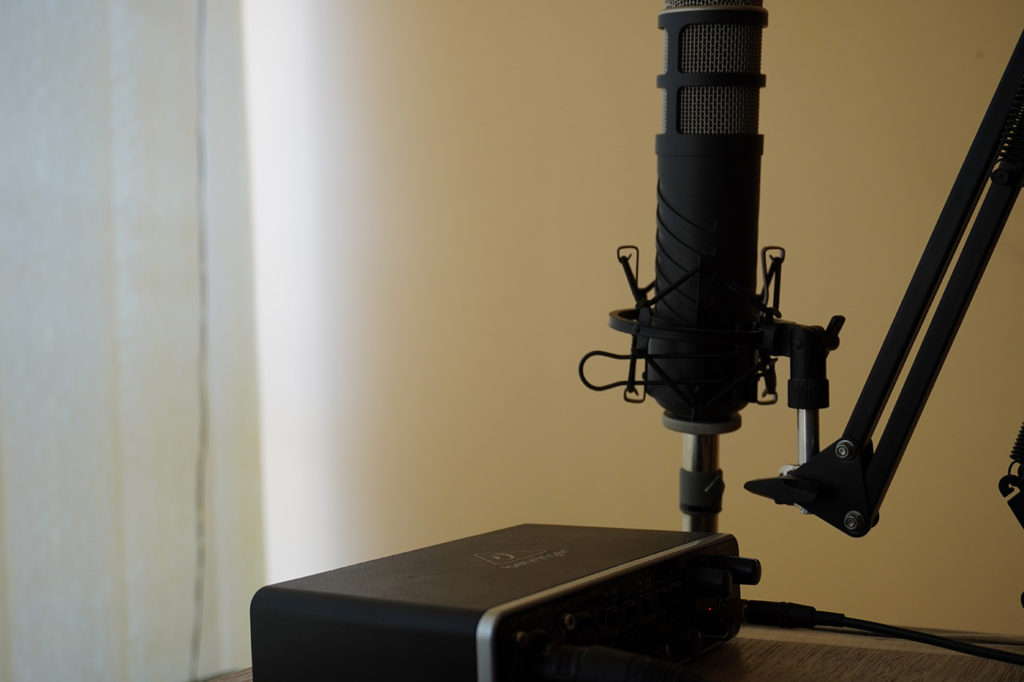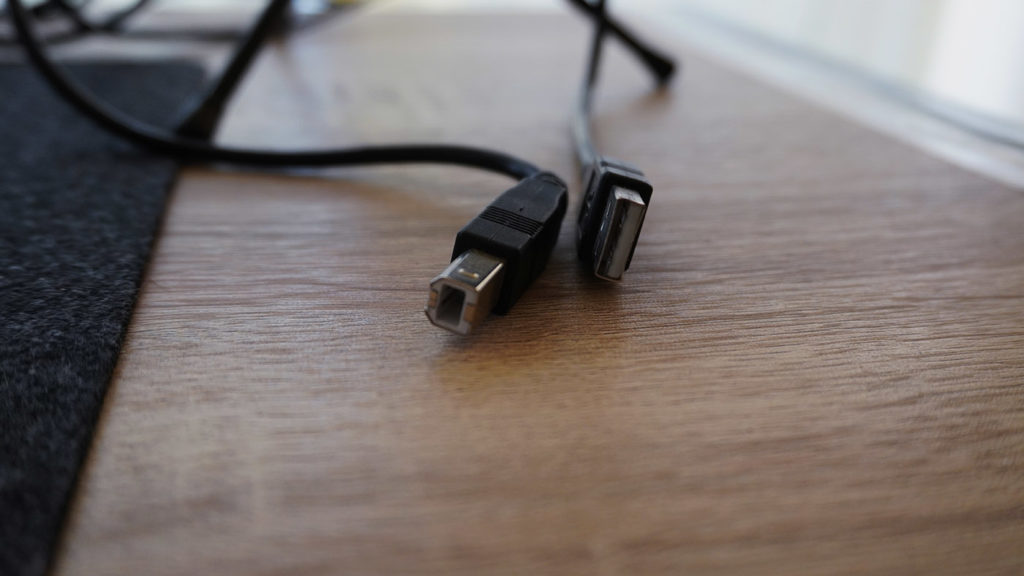

The short answer is that XLR is better than USB and XLR microphones will provide superior sound quality to USB microphones. There are some exceptions, but they are scarce.
While USB microphones can be good as well, they have an inbuilt interface that converts an analog signal to digital. XLR microphones, on the other hand, require a dedicated interface and that is the key difference between the two.
Nevertheless, USB microphones have their place and use. And if you were to ask which of the two is better for a specific price the answer might be different each time. So let’s look at what these two different types of microphones are good for.
Audio Quality

The key thing when looking for a microphone is always sound quality. XLR excels over USB microphones in this regard by a huge margin.
An integrated interface in a USB microphone will never be able to provide the same quality as a dedicated interface. Besides, USB microphones use as the name suggests a USB connection. It is no match for an XLR connection dedicated to audio transferring.
The thing about USBs is, that it is made for so many different things. You can charge your phone through it, attach an SD card adapter, run your keyboard and mouse and do a myriad of other things. It is a connection that does everything but doesn’t do it great.
While XLR connection is made for one thing and one thing only, which is transferring the audio signal. That is it.
The same goes for the interface capabilities of a USB microphone. An interface for the microphone is needed to convert analog signals to digital signals. Your USB microphone does that on its own because it has an inbuilt analog to digital-converter.
Your XLR microphone focuses on one thing only, which is to create an analog signal. It doesn’t do any analog to digital conversion and relies on an interface to do it.
Hence, when it comes to audio quality, your USB microphone is like a jack of all trades and tries to do everything on its own. XLR microphone, on the other hand, does one thing only and relies on the interface to do the rest.
Price
So the audio quality goes to XLR microphones, that is fair. But this achievement comes at a price, literally.
There are some exceptions but most USB microphones are cheaper than XLR microphones. The quality is accordingly worse, but if you don’t have enough money to get an XLR mic you will be taking whatever you can get your hands on.
You can find a USB microphone for 10$, maybe even less, it would probably be no better than your inbuilt smartphone or earphones microphone, but still, it is available.
Anyway, if you are not willing to pay at least 30$ I would just stick with whatever earphone or smartphone microphone you have.
Much better USB microphone options are available in the 30$ to 100$ range tho. Which is hard to say about XLR microphones.
Hence, if you are not willing to pay at least 100$, an XLR microphone is not an option for you. Most of the USB microphones compete in up to a 100$ range because any higher than that and you can buy an XLR microphone which will provide higher audio quality compared to USB microphone.
You can argue that there are plenty of XLR microphones below the 100$ mark and that is true. Maybe not plenty, but still it is a significant amount. Some that come to mind are:
These are also well-known and trusted microphone brands that will provide good quality sound and there are more good XLR microphones under the 100$ mark.
Still, to use these microphones you will be spending over 100$ because you will need an interface and you will need an XLR cable.
The cheapest interface available sells for 80$ and it is Behringer Xenyx 302USB Mixer. Also, it is not the best interface in the world, even its primary use is not recording, but rather doing a live performance.
If you combine Behringer Xenyx 302USB mixer with the cheapest XLR microphone you are paying around 140$ and you still need an XLR cable which is another 5$. So we are at 145$ just to get started.
That does not even include a shock mount or a swivel arm. These you can scrape for another 10$, but that is an absolute minimum.
A USB microphone usually comes with some sort of stand included and sometimes even a shock mount. They do not need an interface nor XLR cable. You are buying only a USB microphone and you are good to go.
Durability
In terms of durability, it is hard to say which is better, but we can make an educated guess. At least in my experience, I own two USB microphones and two XLR microphones. For many years I own them, and neither of them has failed me.
But most of the USB microphones are built cheap, especially if you are paying cheap. USB microphone makers are not only saving on audio quality but build quality as well and you will find most of them made plasticky and lightweight.
Besides, USB microphones as mentioned above have inbuilt analog to digital converters while XLR microphones rely on dedicated interfaces. Hence, USB microphones consist of more inner parts that can fail.
Another concern for USB microphones is their USB cable connection. If the cable is attached to a microphone, once it fails you will have to throw your mic even if it is just a faulty USB cable.
Many of the more expensive USB microphones will have a detachable cable tho. And XLR microphones always use a detachable XLR cable.
Upgradeability

You can easily upgrade XLR microphone set up by changing the microphone, cables, interface and/or pre-amp.
In comparison, USB microphones do not have any options to get upgraded because USB microphones do not require any additional gear to work, they come with cable and an inbuilt analog to digital converter.
To upgrade USB microphone you would need to buy an entirely new microphone.
Anyway, if you own a USB microphone in my honest opinion, the only way you should be upgrading it is by buying an XLR microphone, otherwise, it is not going to make much difference.
Usability
USB microphones have an issue when it comes to devices it can work with. If you own a USB microphone the only device you can use it with is your laptop or desktop computer.
It is nice because almost everyone has some sort of PC, you don’t even need a powerful one. On the other hand, it limits you to one device only.
XLR microphones are compatible with PC, portable recorders and cameras (with adapter). These options make XLR mic a much more versatile device.
For example, with XLR if you own a portable recorder you will be able to use the device outside without the need of carrying a computer. Also, if you need to record audio with a camera you will receive audio synchronized to a video.
In contrast, USB becomes such a hassle once you realize you need to synchronize each video clip to audio.
Travel
When it comes to traveling both XLR and USB microphones have their advantages and disadvantages.
With the USB microphone, it is easy if you take a computer with you. You don’t need to carry an interface and since usually USB mics come with some sort of simple small stands/tripods it makes them a perfect solution for traveling.
XLR microphones require an interface that will take some space and you will need to additionally get a tripod or something small enough to fit in your bag.
However, if you own a dedicated recorder, then with XLR you won’t need an interface nor will you need a PC to record. It makes it a perfect solution for traveling. Portable recorders are small and will fit anywhere.
Then again, a portable recorder will cost you a bit. For a decent one, you can expect to pay a couple of hundreds of dollars.
Simplicity

When it comes to simplicity USB microphones are hard to beat. You simply plug them into your USB port and you are done.
XLR microphones are a bit harder to deal with. You will need to get an interface. If you are using a dynamic microphone, you will need to make sure that inbuilt pre-amps in the interface have enough gain power.
If not, you will need a dedicated pre-amp.
You will also need to buy an XLR cable, you will need a shock mount and some sort of a stand or swivel arm to hold the microphone. Sometimes XLR microphones sell with shock mount, but it is not a rule.
It is not hard setting everything up, but it could look a bit daunting at first, especially when USB microphones offer a much easier route.
Nevertheless, USB microphones are a hassle when you need to record with multiple USB microphones. If you are trying to do a podcast, it is best to use an interface that has multiple XLR microphone inputs. It is very easy to set up and works smoothly.
Variety
In terms of variety, the market is very well divided into two categories. Microphones that are below 100$ and microphones that are above 100$. You can find a myriad of USB microphones up to a 100$ price point.
Some USB mics are more premium such as Blue Yeti, AT 2020, Apogee MiC Plus, Rode Podcaster and Rode NT USB mic and there are more. But the market for USB microphones that sell above 100$ is not there. Because you can get an XLR microphone with an interface at around 150$ and a USB microphone can’t compete against that.
When it comes to XLR microphones, some of the cheaper ones are available at below 100$ price point, but the main market for XLR microphones is above 100$.
You will find all kinds of XLR microphones in any price range. Made for podcasts, broadcast, singing, acoustics guitars, drums and anything you can think of. It is rather overwhelming.
Best XLR and USB Microphones at Different Price Ranges
Up to 50$
There are no XLR microphones in this price range, but there are plenty of USB microphones in this price range.
I would take a look at probably the most popular microphone at this price a Blue Snowball ICE which costs exactly 50$. Another good option would be Fifine USB microphone for slightly less at the cost of 42$. Both of these include a microphone stand.
50$ to 100$ USB
In this price range, I would look at Samson C01 which costs 80$ and Blue Yeti which costs 100$ and offers multiple recording patterns, so you can use it to record podcasts using one microphone. Both microphones include a microphone stand.
50$ to 100$ XLR
At this price range, you can finally get an XLR microphone. They are not great and will have some inherent noise, but you will notice a significant improvement over a USB microphone in audio quality.
I would look at the cheapest condenser XLR available that is MXL 770 for 70$ which is a small diaphragm condenser microphone. But, if you have another 30$ to spare I would choose a large-diaphragm condenser microphone AT 2020 from Audio-Technica for 100$.
Or I would instead choose the cheapest dynamic XLR microphone that is created for on-stage use, but it could work well for home recording as well. That is AKG Pro Audio and it sells for merely 60$.
The main problem with condenser microphones in this price range is their inherent self noise. A dynamic microphone could be the best option here.
100$ to 150$ USB
If I had this budget I wouldn’t look at USB microphones anymore and get MXL 770 with the cheapest interface I can get. Maybe even look at used microphones and interfaces.
But if you insist on USB microphone I would get AT 2020 USB version. I actually own this microphone myself and it was an amazing microphone to start recording with. Still, I wish someone had told me back then to get XLR microphone instead.
AT 2020 USB currently sells at around 150$.
For more direction patterns I would get AKG Pro C44 USB microphone which offers bipolar and wide stereo patterns, similarly, as with Blue Yeti it is good for podcasting. Currently, it sells at 150$ as well.
I have never found a need for these extra recording patterns, but I own multiple microphones. If you don’t want to buy two microphones for podcast recording Blue Yeti or AKG Pro C44 USB could be a solution.
100$ to 150$ XLR
In this price range, there are many more XLR microphones to choose from. First, I would try to get a dynamic microphone and the best option in this price range is Sennheiser e835 that comes with a mic stand and XLR cable. For 105$ that is a steal.
A dynamic microphone will do better than a condenser in an acoustically untreated environment.
However, since it is a dynamic microphone make sure the interface you are going to buy will be able to provide enough gain to run it. It is not a gain hungry mic, so you should be okay with most interfaces
If you want a condenser XLR microphone in this price range I would get AT 2035 which for 149$ is an upgrade from AT 2020. Most importantly AT 2035 has a significantly lower self-noise than AT 2020.
150$ to 200$ USB
Again I wouldn’t buy any USB microphones in this range, but if you insist I would get either Blue Yeti X for 170$ which is an upgraded version of a standard Blue Yeti or instead I would get Rode NT USB for around 176$.
There are not too many USB microphones in this price range, but these two at the very least come from trusted brands and are well-reviewed by many.
150$ to 200$ XLR
For a dynamic XLR microphone at this price range, I would get a Sennheiser e935 an upgrade to its predecessor Sennheiser e835. It costs 180$.
For a condenser microphone, at this price range, I would try to save up a bit and get trusty Rode NT1-A, but if I can’t make it then I would choose AKG Pro Audio C5. Probably even sticking with AT 2035 would be a better option as there are not too many good condenser microphones in this price range.
200$ to 300$ USB
Surprisingly there are two good USB microphone options at this price point. The first one is Apogee Mic Plus. Many swear that this USB microphone can match XLR microphones in audio quality.
Apogee Mic Plus is said to have a very low self-noise. There are no exact numbers, but if we can believe it the microphone is a great option for traveling. It sells for 259$.
Another great USB microphone that sells for 249$ is a Blue Yeti Pro. It is unique because it offers both USB and XLR connections. This is great news because it gives you upgrade options. You can start out using USB connection and once you have enough funds get an interface and XLR cable.
You will find no other worthy USB microphone at this price range and this is as good as it gets for USB microphones.
200$ to 300$ XLR
You will find a ton of XLR microphones in this price range, we will not look at each, but I will mention some really good options, surely there are more, but these are great value microphones.
215$ Rode NT1-A is a crispy microphone and probably the cheapest XLR condenser microphone that could be found in professional studios. It also includes a shock mount and a pop filter.
228$ Rode Procaster is a great dynamic microphone. One of the cheapest options for podcasts and home recording. If you want a more detailed review of it, I made an entire blog post regarding Rode Procaster. You can read it here.
269$ Rode NT1 a step up from NT1-A. For an additional $54 you are getting an amazing value kit that includes a Rycote shock mount and a metal mesh pop-filter. Rycote shock mount alone is worth about 100$. I own this kit myself and it sounds amazingly clear and crispy. One of the best value microphones if not the best.
299$ Audio Technica AT4040 this is another great microphone. It is often compared to Rode NT1 and is a good competition. I will not go in detail as there is this amazing Booth Junkie video regarding the two microphones
Conclusion
| USB Microphones | XLR Microphones |
| Pros: Cheap Easy to setup No extra equipment Cons: Less durable Lower audio quality Not upgradeable Not good for podcasts | Pros: Good audio quality Upgradeable Durable Good for podcasts Cons: Expensive Require interface Harder to setup |
XLR microphones are the best for professional or semi-professional work, when you need great audio quality and don’t want to compromise. They offer amazing audio quality, upgradability, a variety of applications, durability and come at a much higher price.
USB microphones are great for video games, Skype and Facebook calls, starting streaming or Youtube. The best thing about USB microphones is that they sell cheap and are easy to set up.
However, if I wanted to step up my Youtube game the first thing I would do is buy an XLR microphone.
XLR will do better in all most everything. Setting up is a bit harder than with USB microphones, but that is such a lazy excuse it barely counts. The only real drawback about XLR mics is the price.
In the end, the best option depends on what you are going to use your microphone for and whether it is worth spending more to get better audio quality.
If you just need a microphone so someone else could hear you well, there is no need to spend lots of money on superior XLR quality.
If someone were to listen to your USB vs XLR recording through a phone, earphones or laptop speakers they will hardly detect any difference between USB and XLR microphone audio anyway.

Pingback: 18 Tips and Exercises to Improve Your Voice Acting Skills | Voice Over Tip
Pingback: A Comprehensive Guide to Microphone Specifications | Voice Over Tip
Pingback: How to Record High Quality Audio? – Voice Over Tip